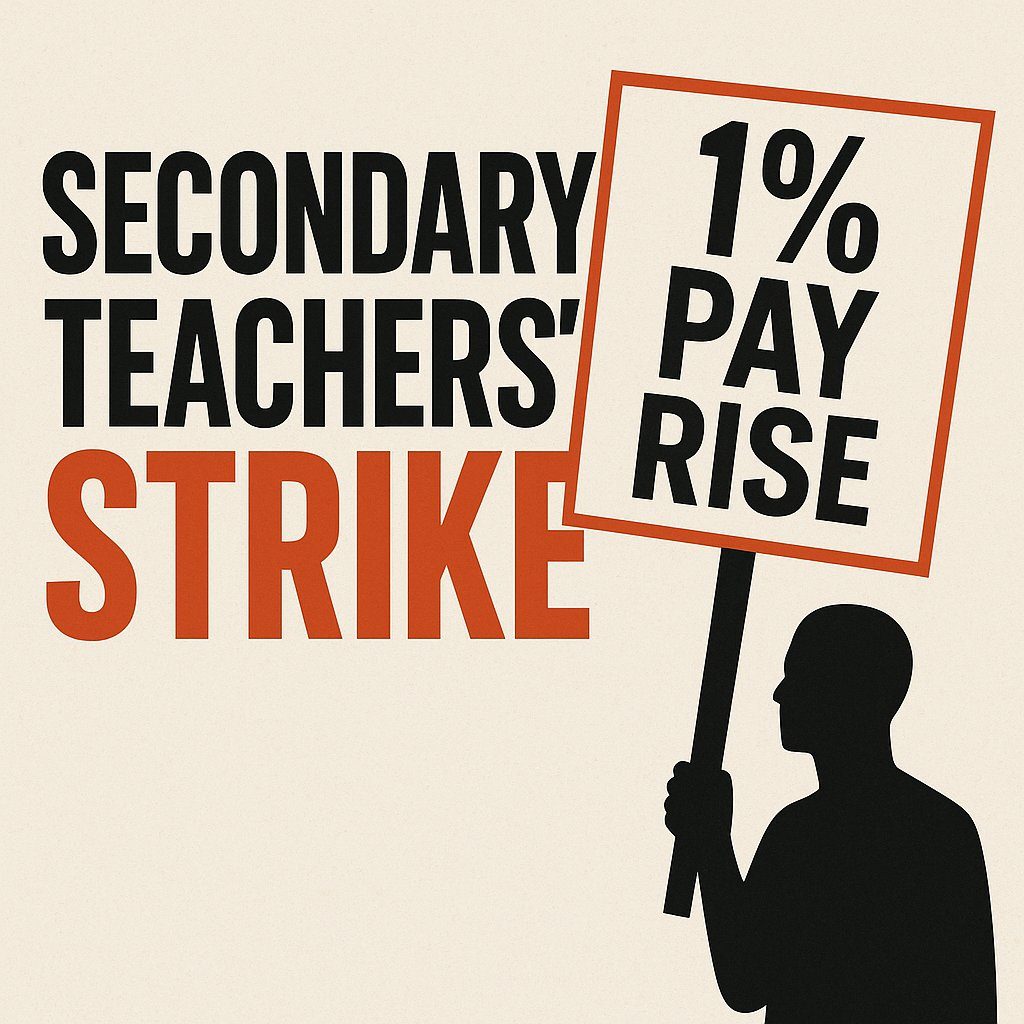The nationwide secondary school teacher strike on the 20th of August had backing from the Post Primary Teachers Association (PPTA), which represents more than 20,000 members. The strike follows the government’s rejection of teachers’ pay equity claims and its controversial offer of just a one percent pay rise.
For many parents and students, the strike comes in response to years of underfunding, stalled negotiations, and a profession under immense pressure.
The 1 Percent Pay Offer
At the heart of the strike is the Ministry of Education’s latest proposal of a 1 percent annual increase for three years, alongside a $2,500 annual payment. While this may sound like a step forward, teachers have labelled it a pay cut in real terms.
Inflation in the year to March 2025 reached 2.5 percent. Teachers believe that this gap in the government’s offer not only fails to keep pace with the rising cost of living it effectively reduces teachers’ spending power. PPTA president Chris Abercrombie described the deal as “the lowest in a generation,” arguing that it does nothing to address the sector’s recruitment crisis or the needs of students in increasingly stretched classrooms.
Teacher Shortages and Workload Pressures
New Zealand schools are already grappling with an estimated shortage of 800 secondary teachers. Many experienced educators are leaving the profession due to pay that lags behind both inflation and the salaries offered overseas.
This shortage directly impacts students. Larger class sizes, cancelled subjects, and inconsistent staffing make it harder to deliver quality education. For families wondering why their children’s learning is being disrupted, teachers respond that without better pay and conditions, schools simply cannot retain or attract the staff they need.
Equity and Gender Pay Concerns
Another major factor in the dispute is the government’s decision to cancel the education sector’s pay equity claims. These claims were designed to address decades of underpayment in professions dominated by women, including teaching, nursing, and early childhood education.
The scrapping of these claims has angered educators, many of whom see it as a rollback of hard-won progress. The PPTA had sought an additional 4 percent increase in recognition of this history of inequity. For teachers, the strike is about fairness as much as wages.
Austerity and Charter Schools
The strike also comes against the backdrop of wider changes in education. The coalition government, led by the National and ACT parties, has announced plans to expand charter schools. Critics say these publicly funded but privately run institutions siphon resources away from the public system.
At the same time, major cuts have been made to programmes such as the free school lunch initiative, with contracts handed over to private providers. Teachers argue that these policies represent a dangerous shift toward privatisation, undermining the principle of free, high-quality public education for all.
Wider Public Sector Strikes
Teachers are not alone in their struggle. Nurses, doctors, and other public sector workers have also rejected similar low pay offers. With inflation outpacing wages and the government pursuing a broader austerity agenda that includes more than 10,000 job cuts across the public service, industrial action is spreading.
The upcoming secondary teachers’ strike is part of this broader movement, highlighting widespread dissatisfaction across New Zealand’s essential services.
What Happens Next?
If no resolution is reached, the PPTA has signalled further industrial action, including rostering students at home on rotating days from mid-September. Meanwhile, the New Zealand Educational Institute (NZEI), representing primary and early childhood educators, is also preparing its next steps after rejecting a similar offer.
For parents, this may mean further disruption. But for teachers, the strike represents a fight to ensure that public education in New Zealand remains properly funded, fairly staffed, and sustainable for the next generation.
Why This Matters
The secondary teachers’ strike is not simply about salaries. It’s about the future of the teaching profession, the quality of education for students, and the principle of equity in the workplace. Teachers are demanding more than a fair wage—they are demanding respect for the work they do, and a government willing to invest in the country’s future.
As the strike unfolds, one thing is clear: this dispute will shape not just the pay packets of teachers, but the direction of New Zealand’s education system for years to come.











